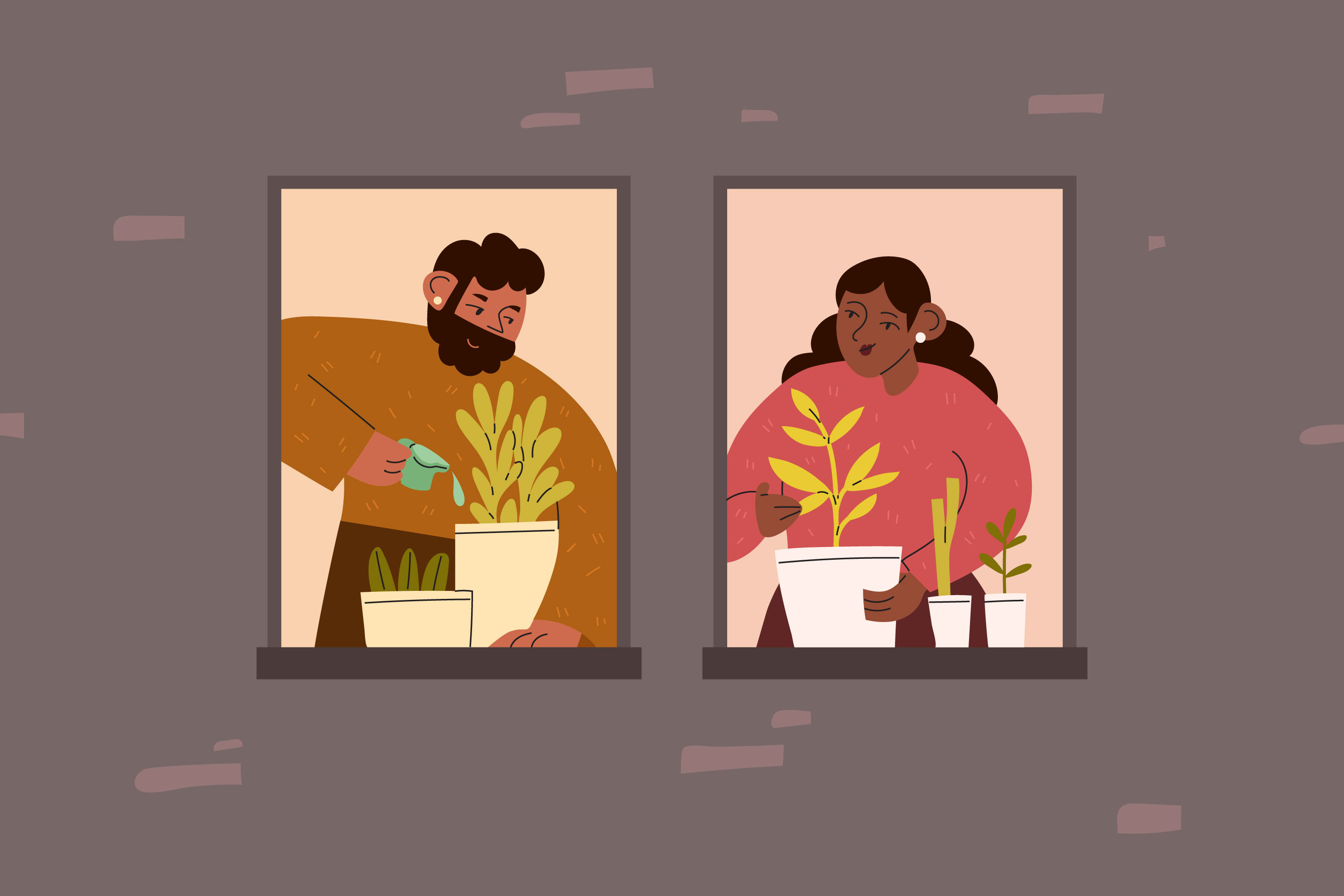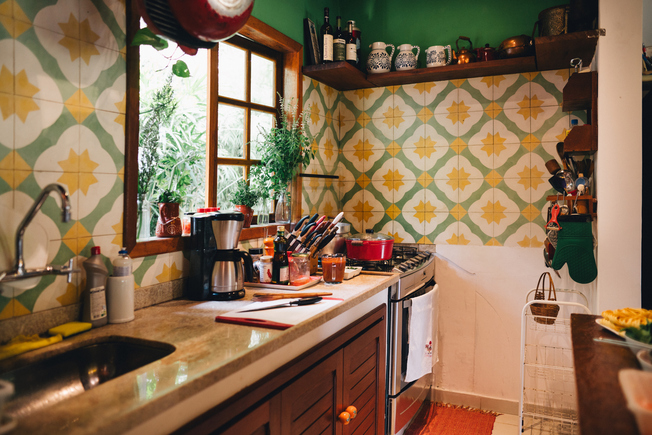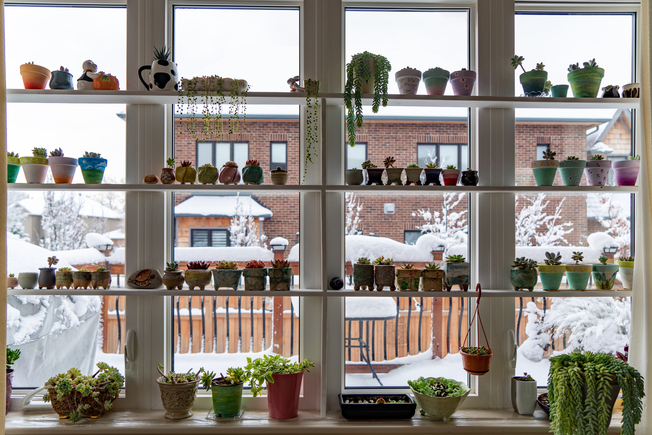
An Expert’s Guide to Urban Gardening
Mar 21, 2024
If you look out your window at the outdoor space that surrounds your apartment, what do you see? Maybe you have a porch or rooftop, a whole backyard, or a few patches of dirt peeking up through stretches of pavement.
If you’re in an urban area, you may think your chances at gardening and planting outdoors where you live are next to zero. Or maybe, as the weather grows milder and the sun soaks your suburban apartment every afternoon, you find yourself eyeing that dry patch of dirt behind your place, wondering if you could bring it to life — or bring life to it.
Whatever your garden space looks like, we’re here to tell you that you can get outside and garden this year, whether it’s directly in the ground or not. And Andrew Johnson, owner of The Good Food Farm in Ashby, MA, is here to help you make it happen with his gardening tips and DIY projects.
Got Dirt?
If you live in an area where you have access to dirt that gets seven to eight hours of sunlight per day, you may be in luck — but Johnson says not to make any planting moves until you test the soil. “Unfortunately, in a post-industrial world, many of our soils — especially in urban settings — are contaminated with heavy metals, PFAs, and other harmful chemicals, making them unsuited for edible plants,” he says.
So, if your goal is to grow start vegetable gardening, pick up a soil testing kit and confirm whether your dirt is contaminated or not. Then, based on your results, you can proceed accordingly.
If you have contaminated soil, go with plan B. Don’t give up on your visions of home gardening if your soil test comes back positive for contaminants. You may not have luck growing vegetables, Johnson says, but you can grow ornamental plants in contaminated. So, if it’s the ritual of gardening you’re after, feel free (if you have permission from your landlord) to plant shrubs or flowers. But if you have your heart set on growing your own food, don’t start here. Instead, Johnson recommends planting in raised beds, which you can fill with good quality compost and potting soil before you plant. You can also try to start your own garden with hanging baskets, a box on your windowsill, or some planters on your patio if you have space for a balcony garden.
If your test was clean, it’s time to turn dirt into soil. The dirt that you tested may have come up clean for contaminants, but it’s not ready for urban farming just yet. “There are a few things you can do to revive what we might call lifeless ‘dirt’ in order to turn it into biologically active and healthy soil,” says Johnson.
Aeration is the first step to success in urban agriculture. It introduces more oxygen to the soil so that beneficial aerobic microbes — microbes that can survive in oxygenated environments — can help your plants grow and thrive. “You want to eliminate compaction and create an opportunity for oxygen to get down into the soil,” says Johnson. “This allows plant roots to grow and expand freely in search of nutrients.” To aerate your soil, just use a small shovel or garden fork to crack open the soil without inverting it.
Johnson also recommends introducing compost — nutrient-rich, organic fertilizer — to revive that barren plot of dirt. “It's hard to overstate the power of incorporating compost into your garden,” says Johnson. “By doing so, you will be introducing beneficial microbes and increasing organic matter.”
A third option for optimizing soil health is mulching. Mulch is key for the soil’s moisture, Johnson tells us, which in turn invites beneficial microorganisms and fungi like mycorrhizae. These live on the roots of plants and allow them to uptake more moisture and nutrients, helping plants become healthier and more plentiful.
No Dirt, No Problem.
If you live in an urban area where you only have access to a fire escape or balcony, or your landlord won’t let you start your garden outdoors using the soil, don’t fret. You have more options. You can use a raised planter, as mentioned, as long as it’s not made out of treated wood, which is likely to contaminate the food you grow. If you’re looking for something that’s even smaller or more portable to help achieve your food production dreams, Johnson recommends grow bags.
Grow bags are like planters, except they’re made of fabric. You fill them with potting soil and compost like you would with a raised garden trug or a large pot. The benefit? They’re much lighter, so you can move them around — and they’re collapsible, so you can store them easily in your apartment when it’s not growing season. That makes them perfect for city gardens.
“You can purchase these at Home Depot or other garden-supply stores. They are made of woven fabric or canvas and usually have room for one to three plants,” he says. He names tomatoes, peppers, eggplant, kale, chard, and herbs as compatible plants for this method. “The only thing they probably don't make a sense for [grow bags] would be root veggies as those typically need a bit more space to grow any significant quantity of food.”
Only in rare cases, Johnson says, would indoors be a more suitable option for gardening than outdoors, because of the importance of sunlight. “It's really difficult to get adequate sunlight for indoor production,” he says. If you experience pest problems outdoors like hungry rats or rabbits, and common solutions like chicken wire and hardware cloth don’t do the trick, that might be a reason to move your plants to the safety of a well-lit indoor spot.
And in terms of temperature, there are some crops you should be prepared to keep very warm — or even indoors — like ginger, tomatoes, peppers, and cucumbers. “Some plants, like ginger, are almost impossible to grow in our climate without some sort of clear covering to protect and heat the soil.”
With Johnson’s advice on gardening basics, you can turn your fire escape, deck, porch, or patch of dirt into a thriving garden. Look into year-round planting calendars for your region so you can time your gardening endeavors accordingly and grow your own vegetables no matter what time of year it is.
For more apartment or small space garden ideas, check out the rest of our Lifestyle section.
Top cities
Atlanta Apartments
1,999 apartments starting at $600/month
Austin Apartments
4,949 apartments starting at $600/month
Baltimore Apartments
1,472 apartments starting at $500/month
Boston Apartments
3,499 apartments starting at $940/month
Charlotte Apartments
2,903 apartments starting at $450/month
Chicago Apartments
4,012 apartments starting at $450/month
Dallas Apartments
5,609 apartments starting at $604/month
Fort Worth Apartments
2,193 apartments starting at $600/month
Houston Apartments
4,504 apartments starting at $590/month
Las Vegas Apartments
1,081 apartments starting at $704/month
Los Angeles Apartments
11,535 apartments starting at $625/month
Miami Apartments
544 apartments starting at $1,000/month
Milwaukee Apartments
928 apartments starting at $465/month
New York Apartments
4,118 apartments starting at $488/month
Oakland Apartments
608 apartments starting at $885/month
Orlando Apartments
842 apartments starting at $825/month
Philadelphia Apartments
3,657 apartments starting at $550/month
Phoenix Apartments
4,153 apartments starting at $599/month
Pittsburgh Apartments
1,223 apartments starting at $600/month
Portland Apartments
2,519 apartments starting at $599/month
Raleigh Apartments
1,367 apartments starting at $750/month
San Antonio Apartments
3,925 apartments starting at $525/month
San Diego Apartments
2,960 apartments starting at $650/month
San Francisco Apartments
436 apartments starting at $675/month
San Jose Apartments
405 apartments starting at $1,300/month
Seattle Apartments
3,623 apartments starting at $450/month
Tampa Apartments
1,078 apartments starting at $800/month
Washington DC Apartments
2,878 apartments starting at $745/month


